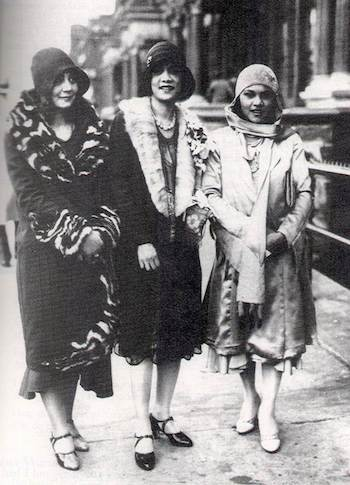Passing: Becoming White and Distancing Oneself from a Non-White Identity
In "The Color Line in Southeastern Europe" by Jeremy Kuperberg, the idea of Yugoslavs, a vaguely white ethnic group from Southeastern Europe, distancing themselves from less-white groups in order to assimilate into whiteness is explored. Kuperberg writes: "As plausibly white and European nations, however, they also sought acceptance in the twentieth-century community of colonial powers through differentiation from less-white groups and spaces" (287). Historically, this pattern is not exclusive to Southeastern Europeans, however. Through this short blog post, I will attempt to explore this process of assimilation and what it entails.
Historically, Italians weren't always seen as white. Southern, darker-skinned Italians were the target of much racism and ire by Northern Italians. To the Northerners, the Southerners were, and I quote: "an “uncivilized” and racially inferior people, too obviously African to be part of Europe" (Staples). Using Kuperberg's text as a source for analysis, the argument provided here is not much different than the argument provided by DuBois regarding Southeastern Europeans: "The greatest and most dangerous race problem today is the problem of relations between Asia and Europe: the question of how far 'East is East and West is West'" (289).
Regarding the film "Passing" and the character of Uncle Ruckus, though both works concern group far removed from Europe and consequently, can't exist in the same ambivalent gray ethnic area Southeastern Europeans do, they both featured an effort by two characters to disconnect themselves from their Black identity in order to assimilate into whiteness. In the case of Passing, Clare, a white-passing Black woman, lives with her white husband, who is wholly unaware he is married to one. In the case of Uncle Ruckus, racist commentary and hatred toward African Americans is common, so when he finds out he is, in fact, 102% Black, it provokes a crisis in his identity.
- Kuperberg, Jeremy. "The Color Line in Southeastern Europe: A Du Boisian Analysis of the Yugoslav Region." Social Problems (Berkeley, Calif.), vol. 68, no. 2, 2021, pp. 284-299.
Staples, Brent. “How Italians Became 'White'.” The New York Times, The New York Times, 12 Oct. 2019, https://www.nytimes.com/interactive/2019/10/12/opinion/columbus-day-italian-american-racism.html.





Comments
Post a Comment